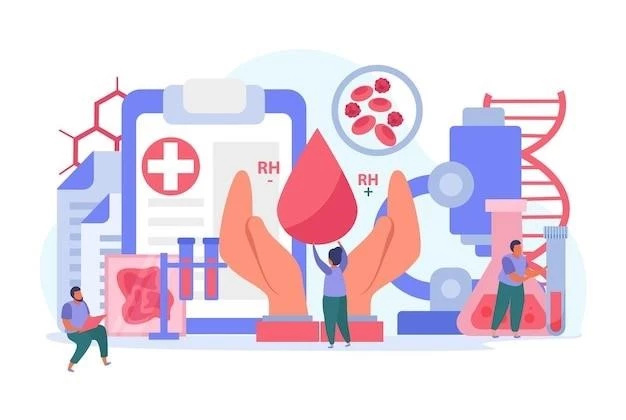Disease ‒ Hemosiderosis
When exploring the complexities of Hemosiderosis, understanding the disease, its impact on the body, and potential treatment routes is crucial. This article will delve into various aspects to provide a comprehensive overview.
Introduction to Hemosiderosis
Hemosiderosis is a rare condition characterized by the abnormal accumulation of iron in the body. This excess iron can deposit in various organs, leading to tissue damage and dysfunction. The condition can be classified as either primary, resulting from a genetic mutation affecting iron metabolism, or secondary, typically caused by repeated blood transfusions or certain chronic diseases.
The excessive iron deposition in tissues can lead to serious complications such as liver cirrhosis, heart failure, diabetes, joint pain, fatigue, weakness, abdominal pain, and insomnia. Symptoms may vary depending on the organs affected by the iron overload. Early diagnosis is essential to prevent further organ damage and manage the condition effectively.
Understanding the underlying causes, risk factors, symptoms, and diagnostic methods for Hemosiderosis is critical for healthcare providers to deliver accurate care and support to affected individuals. Stay tuned to explore treatment options, complications, management strategies, and future directions in Hemosiderosis research.
Symptoms and Diagnosis
The symptoms of Hemosiderosis can vary depending on the organs affected by iron deposition. Common symptoms include fatigue, weakness, abdominal pain, joint pain, and insomnia. As the condition progresses, it can lead to more severe manifestations such as liver cirrhosis, heart failure, and diabetes.
Diagnosing Hemosiderosis often involves a combination of medical history assessment, physical examination, blood tests to measure serum ferritin and iron levels, genetic testing in cases of suspected genetic forms, imaging studies like MRI or CT scans to assess iron levels in organs, and liver biopsy to confirm iron overload.
Early diagnosis is crucial to prevent organ damage and complications associated with iron overload. Healthcare providers must thoroughly evaluate symptoms and conduct the necessary tests to accurately diagnose Hemosiderosis. Timely intervention can help in managing the condition effectively and improving the quality of life for affected individuals.
Treatment Options
Treatment for Hemosiderosis aims to reduce iron levels in the body, manage symptoms, and prevent organ damage. The primary approach involves iron chelation therapy, where medications are administered to bind and remove excess iron. Desferoxamine, deferiprone, and deferasirox are common chelators used in treatment.
In cases of severe organ damage, therapeutic phlebotomy may be recommended to lower iron levels by removing blood containing excess iron. Regular monitoring of iron levels and organ function is crucial to assess treatment effectiveness and adjust therapy as needed.
Additionally, managing complications such as liver cirrhosis, heart failure, and diabetes is essential. Lifestyle modifications, including a balanced diet, regular exercise, and avoiding alcohol consumption, can support treatment outcomes. Collaborating with a multidisciplinary healthcare team is vital to address the diverse aspects of Hemosiderosis care comprehensively.
Complications and Prognosis
Hemosiderosis can lead to severe complications due to the excessive deposition of iron in various organs. If left untreated, the condition can progress to liver cirrhosis, heart failure, and diabetes, significantly impacting quality of life and overall health.
The prognosis of Hemosiderosis depends on several factors, including the underlying cause, the extent of organ damage, and the timeliness of treatment initiation. Early diagnosis and effective management can improve outcomes and prevent complications.
Regular monitoring of iron levels, organ function, and response to treatment is essential in predicting and managing potential complications. Collaborating closely with healthcare providers, following treatment regimens diligently, and making necessary lifestyle modifications can play a significant role in enhancing the prognosis for individuals with Hemosiderosis.
Management and Lifestyle Changes
The management of Hemosiderosis involves a comprehensive approach to reduce iron levels, alleviate symptoms, and prevent further organ damage. Adhering to prescribed iron chelation therapy, therapeutic phlebotomy, and regular monitoring of iron levels are fundamental aspects of disease management.
Lifestyle changes can also play a significant role in managing Hemosiderosis. Maintaining a balanced diet rich in iron-lowering foods, staying physically active, avoiding excessive alcohol consumption, and managing underlying conditions such as diabetes or heart disease can positively impact disease progression.
Educating affected individuals about their condition, treatment options, and the importance of adherence to medical recommendations is essential. Close collaboration with healthcare providers and timely follow-up appointments are vital components of effective disease management. By incorporating lifestyle modifications and proactive management strategies, individuals with Hemosiderosis can optimize their health outcomes and quality of life.
Research and Future Directions
Ongoing research in the field of Hemosiderosis focuses on advancing diagnostic techniques, improving treatment modalities, and enhancing outcomes for affected individuals. Studies are investigating novel iron chelators, targeted therapies, and genetic therapies to address iron overload more effectively.

Furthermore, research endeavors aim to elucidate the underlying mechanisms of iron deposition, genetic factors influencing disease progression, and potential biomarkers for early detection. Collaborative efforts between researchers, healthcare professionals, and advocacy groups are vital in driving innovation and improving patient care.
The future directions in Hemosiderosis research also include exploring personalized medicine approaches tailored to individual genetic profiles and disease characteristics. By harnessing cutting-edge technologies and interdisciplinary collaborations, the goal is to pave the way for more precise diagnostics, innovative therapies, and ultimately, improved outcomes for individuals affected by Hemosiderosis.
